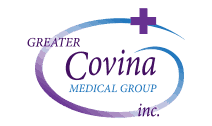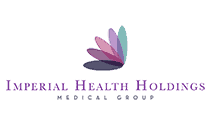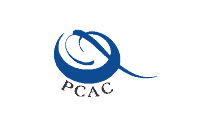Bladder Emptying Disorders
Bladder Emptying Disorders
The urine that is produced by your kidneys travels through the ureters and is stored in the bladder. As the urinary bladder reaches its maximum storage capacity, the bladder emptying process or the process of urination begins.
Services Offered
Her Smart Choice Medical Centers Offer a Variety of Services :
Bladder Emptying Disorders Q & A
Q1. What is incomplete bladder emptying?
Incomplete bladder emptying is a problem that commonly occurs in females. It is characterized by an abnormally slow flow of urine while passing it or a feeling of incomplete bladder emptying post urination.
Q2. What are the symptoms of incomplete bladder emptying?
The main symptoms of incomplete bladder emptying are:
- Delay in starting urination
- A slow flow of urinary stream
- Straining to pass urine
Additional symptoms of incomplete bladder emptying include:
- Urinary frequency or frequent urination
- Urgency to urinate
- Recurrent urinary tract infections (UTIs)
Q3. What are the causes of incomplete bladder emptying?
There are many causes of incomplete bladder emptying in females that can be permanent or temporary. Some of these are:
- Vaginal delivery
- Pelvic surgery
- Acute inflammation including infection of the genital tract or UTIs
- Drugs such as detrusitol, epidural anesthesia, and antidepressants
- Incomplete relaxation of the urethral sphincter while passing urine
- Psychological problems such as hysteria, depression and anxiety
Q4. What are the complications of incomplete bladder emptying?
If left untreated, incomplete bladder emptying may lead to frequent and recurrent urinary tract infections. In severe cases, it may also damage the kidney function of the patient.

Q5. What is double voiding technique?
There are many approaches to improve bladder emptying and double voiding is among the most common of them. This technique or approach is particularly effective in females who have incomplete emptying of the bladder or who return frequently to the toilet after passing urine.
The following are the steps for double voiding:
- Sit comfortably on the toilet seat and lean forward slightly
- Rest your hands on the thighs or knees; this is the perfect position of your bladder for passing urine
- Pass urine normally; focus on emptying your bladder as much as you can
- Remain seated on the toilet seat and wait for about 20-30 seconds
- Lean further forward slightly and pass urine again
You may also rock from side to side and then pass urine as this may lead to better bladder emptying.
Q6. What are the additional techniques to improve bladder emptying?
There are additional techniques apart from double voiding that you can use to improve bladder emptying and reduce frequent urination.
One such technique is Crede maneuver in which you have to sit on the toilet seat and lean slightly forward before passing urine. You should put your hand over your pubic bone and push slightly inward toward your stomach and start urinating. You should continue pushing toward your bladder while urinating. This helps in increasing the quantity of urine passed from your bladder.
Additional techniques to improve bladder emptying are:
- Running water: You may listen to running water to improve your ability to empty your bladder.
- Bladder percussion: When you tap on your bladder giving slight pressure it can result in contractions that may help in passing urine. You should continue tapping for a couple of seconds even after it seems that the bladder is fully emptied.
- Vibration therapy: In this therapy, you have to hold a vibrating device on your lower abdomen. The vibrations may stimulate the urinary bladder and promote bladder emptying.
- Stimulation therapy: This therapy includes touching certain regions of your body to stimulate bladder emptying. Stimulation methods include massaging the inner thighs or lower stomach and pulling the pubic hair.
Q7. What is the treatment for incomplete bladder emptying?
Apart from various techniques to promote bladder emptying, other treatments are also available to improve the condition. Some of these are:
Lifestyle changes
If you are overweight, then losing excess weight can help in reducing the incidence of frequent urination. You should also avoid drinking excessive fluids, particularly before going to bed to prevent frequent urination at night.
You should also take measures to prevent the occurrence of constipation. Increase the quantity of fiber in your diet and do moderate-intensity exercise for at least half an hour every day. This helps in stimulating the bowels and reducing constipation. Drink sufficient amount of water during the day time to prevent constipation.
Exercises
Doing pelvic floor exercises helps in strengthening the muscles of the pelvis and those present around the urinary bladder. This may decrease the incidence of incontinence and improve bladder emptying. Examples of such exercises are Kegels or Kegel exercises.
Medicines
Your physician may prescribe medicines to treat incomplete bladder emptying. Some of these medicines are:
- Oxybutynin
- Tolterodine
- Trospium
- Solifenacin
Your physician may also inject Botulinum toxin into your bladder to reduce the frequency of bladder spasms and improve incomplete bladder emptying.
Your physician may also prescribe antibiotics to treat urinary tract infections.
Surgery
Surgery is the last approach to treat incomplete bladder emptying and frequent urination. Surgery is done on the urinary bladder and its surrounding structures in the pelvis. Some examples are bladder sling procedures or bladder neck suspension surgery.
Insurance Plans
Her Smart Choice accepts most major insurance plans. Please remember to bring your insurance card(s) with you to your appointment.
We also accept cash payment and offer convenient payment plan options.

















